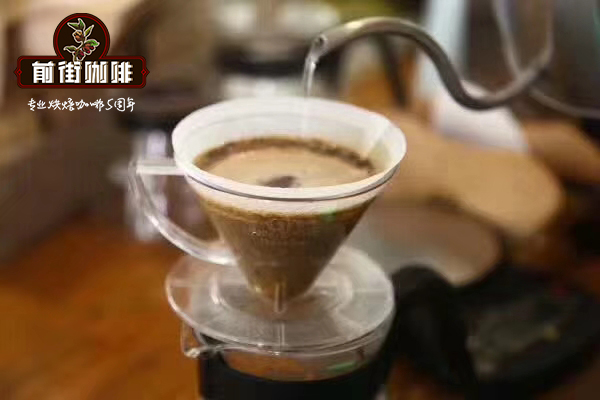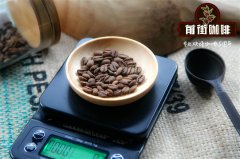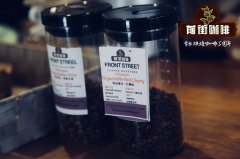How much caffeine is there in a cup of coffee? The difference between decaf and decaf? How to get to caffeine?

Professional coffee knowledge exchange more coffee bean information please follow the coffee workshop (Wechat official account cafe_style)
How much caffeine is there in a cup of coffee? Have you ever thought about this? Most people just think about how to choose a cappuccino, latte or mocha and rarely think about how much caffeine they contain. However, as with anything, too much is not good. It's the same with coffee. Excessive consumption of caffeine can cause damage to your health. But how much is reasonable? To answer this question, we need to know more about the amount of caffeine contained in various types of coffee.
We use a cup of coffee to make an estimate. However, because the amount of caffeine in a cup of coffee also depends on many different factors, such as brand and blending, it is difficult to give a standard figure. For convenience and simplicity, a comparison table of the nutritional value of different types of coffee is given below for reference.
Type of coffee. Caffeine content
Instant coffee (227g) 70 mg (approx)
Make coffee (227g) 125mg (approx.)
Drip Coffee (227g) 145 mg (approx.)
Cappuccino (227g) 75 mg (approx)
Espresso (57g) 90 mg (approx.)
Latte (227g) 75 mg (approx)
Starbucks Expresso Solo (28g) 75 mg
Starbucks Expresso Doppio (57g) 150mg
Dunkin' Donuts Coffee (454g) 180 mg (approx)
Starbucks Vanilla Latte (454g) 150mg
Decaf coffee (brewed) (227g) 6 mg (approx.)
Decaf coffee (instant) (227g) 3 mg (approx.)
Nothing should generally be called "decaf", not "decaf". Because of coffee
How do you make decaf coffee?
Generally speaking, low caffeine means that coffee beans are separated from caffeine before they are sent to the roaster, but low-caffeinated coffee is not 100% caffeine-free. It can only remove 94% of the caffeine, 98% of the caffeine, and still contains 2%, 6%, and 6% of the caffeine. At present, the main methods to remove caffeine are dissolving method, Swiss water treatment method and carbon dioxide extraction method.
I. dissolving extraction method
The coffee beans are processed first, then the bean surface is expanded and dough is added by high-fat and high-fat steaming, then the bean is dissolved with dichloromethane (CH3CI), and the caffeine is extracted. In this method, dichloromethane is used to adsorb the bean surface to dissolve caffeine, but it does not reflect the smell of coffee beans.
II. Swiss Water treatment Law
After the coffee beans are soaked in hot water, after caffeine and other ingredients are dissolved in the water, filter the semen with activated carbon, and then introduce the non-caffeinated semen back to the previous coffee beans, allowing the coffee beans to reabsorb the lost ingredients. This method does not use any chemical solution to extract caffeine, of course, it is not extracted with chemical solution, but some of the ingredients of the coffee are also overheated by activated carbon, causing the coffee to lose some flavor. Not only that, the low-caffeinated coffee produced by this method is also known as high-caffeine.
III. Carbon dioxide stripping extraction
Roasting coffee beans produces a large amount of carbon dioxide (CO2). At this time, the carbon dioxide is highly processed into liquid, and then poured into the processed coffee beans to remove caffeine, and then put energy to convert carbon dioxide into natural energy. The removal of caffeine in this way will not cause caffeine loss, the color will not change, and it is not easy to extract substances other than caffeine. It can retain the original flavor of coffee beans, but because it needs to be completed in a special high-temperature environment, it is necessary to invest in equipment. As a result, the amount of low-caffeinated coffee extracted in this way is less than that seen on the market.
No matter which one is used, the industrial process of removing caffeine from coffee beans is very strenuous, and the carbon dioxide and organic solubilization of coffee beans can also remove the aroma of coffee, and the smell of coffee beans is more or less broken in the process of processing.
END
For more professional coffee exchanges, please scan the code and follow Wechat: qiannjie

Please indicate the source of the reprint.
Important Notice :
前街咖啡 FrontStreet Coffee has moved to new addredd:
FrontStreet Coffee Address: 315,Donghua East Road,GuangZhou
Tel:020 38364473
- Prev

How to choose a hand coffee pot? which kind of spout is better for the capacity of the hand coffee pot?
Professional coffee knowledge exchange more coffee bean information Please pay attention to the coffee workshop (Wechat official account cafe_style) the key points of the selection of hand-brewed coffee pots in so many different capacities, materials and other different characteristics of hand brewers, how to choose? The following will be for you to sort out a few points for attention when shopping, please measure it according to your preferences and needs. According to grade
- Next

Hand coffee knowledge novice literacy hand coffee powder water proportion parameters water injection technique
Professional coffee knowledge exchange more coffee bean information Please follow the coffee workshop (Wechat official account cafe_style) wants to make a good cup of coffee. We have already mentioned the importance of choosing beans and how to preserve coffee beans. However, owning good beans also requires good skills to make a cup of mellow coffee. Although you and I are not professional coffee brewers, we only need to have good skills.
Related
- Beginners will see the "Coffee pull flower" guide!
- What is the difference between ice blog purified milk and ordinary milk coffee?
- Why is the Philippines the largest producer of crops in Liberia?
- For coffee extraction, should the fine powder be retained?
- How does extracted espresso fill pressed powder? How much strength does it take to press the powder?
- How to make jasmine cold extract coffee? Is the jasmine + latte good?
- Will this little toy really make the coffee taste better? How does Lily Drip affect coffee extraction?
- Will the action of slapping the filter cup also affect coffee extraction?
- What's the difference between powder-to-water ratio and powder-to-liquid ratio?
- What is the Ethiopian local species? What does it have to do with Heirloom native species?

